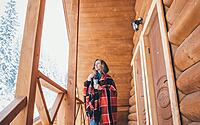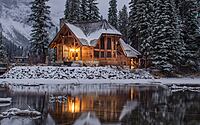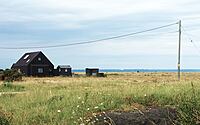No need to brick it: Modern materials to cover your exterior walls
If your home is lacking in character or suffering from an ugly exterior, what options do you have? Well, with modern materials and new building techniques, you’ve more wall and cladding choices than you might think. From timeless timber to contemporary metal and composite cladding, there are plenty of materials to consider. So, let’s take a look at some modern materials you could use to cover your exterior walls.
Timber cladding
Timber cladding has been around for years. However, timber is now being used in more ways than ever before. So, it can be used to create a contemporary as well as traditional look. And some of the effects available are quite stunning.
The great thing about this material is your wide choice of wood types and finishes. Larch lasts at least 30 years and is treatable and paintable. So, it’s a versatile option. Red cedar can last even longer and provides a lovely, warm hue. But for a smooth, modern finish and increased durability, there are now modified timbers such as Accoya that you can use too.
When you’re installing timber house cladding cost, maintenance and durability are going to be top of your concerns. If budget is an issue, try using timber on small sections of your walls to keep costs down while still creating an impact.
If maximum impact is your priority, then charred timber should be at the top of your list. This blackening technique, known as Shou Sugi Ban, has been used in Japan for a long time. But it’s only just catching on internationally. Some charring processes highlight the wood grain while others give you a completely dark and dramatic look.
Metal sheets and tiles
Metal cladding has been a staple of commercial and industrial builds for a long time. But metals such as zinc, copper and steel are now being used to great effect on residential properties too.
Zinc adds a modern look with the benefit of being low maintenance and durable. For those on a budget, zinc-coated steel is alternative option. If weight is a concern, aluminium could be the answer.
Some metals such as copper develop a patina over time, giving you a modern and completely unique finish to your home. Panels with a mix of copper and brass can be bought with different levels of oxidisation, so you can benefit immediately from the patinated surface.
You can buy cladding in panels that slot together to create an ultra-modern ribbed look. Others fit together seamlessly for a clean-lined exterior. So, there’s something for all tastes.
Composite weatherboarding
Composite weatherboarding is a popular choice for cladding exterior walls thanks to its durability and affordability. So, you can have the look of wood without the maintenance. However, not all composite materials are of the same quality or use the same combination of materials, meaning you do need to shop around. If eco-credentials are important to you, look for the brands that use only recycled materials.
Composite cladding is relatively easy to install and comes in a range of colours. You needn’t stick to horizontal slats as diagonal and vertical installations are also possible. Like other cladding materials it can be used to clad sections or the whole of your exterior. For instance, dark composite boards can really stand out against bright, white render.
Smooth and colourful render
Render hasn’t always been looked upon fondly. The much-maligned pebbledash and uninspiring grey sand and cement renders are probably to blame. Although cost-effective, they don’t necessarily shout modern or attractive. But there are different types of renders available to homeowners and modern materials mean there’s a wider choice of finishes now too.
Monocouche and silicone renders are perhaps the most well-known alternatives. Monocouche and silicone renders can have a smooth or rough finish, but most importantly they can be mixed with pigments to give you the colour you want without the need for painting.
Silicone render repels moisture and is less prone to cracking and staining, making it a good option for modern white exteriors. Monocouche is versatile, weather-resistant and adds a thermal layer to your home. So, both have obvious benefits.
- by Matt Watts



